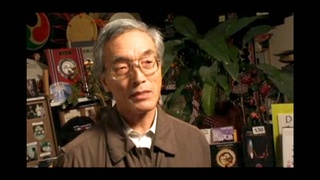Interviews
Origins of the Matsuri Daiko Group in Peru (Spanish)
(Spanish) With the passage of time and because of the centennial celebrations [marking] Japanese immigration to Peru in 1999, [and] as a result of an invitation to the youth, a performance was done, with more than 400 people, where the eisa was danced, and other dance styles pertaining to the Matsuri Daiko, and it was such that people came from the head office to see it and they invited us and they asked us if we wanted to form a branch office here in Peru, which we accepted with so much enthusiasm. The initial group that formed for the centenary celebration…this started as an initiative of the Okinawense Association of Peru, where they planned to perform an eisa dance during the festivities where there were lots of people gathered. In truth, they were the ones who suffered [because they worked hard to pull it off]. They were the ones who organized the meeting; first they began to publicize by word of mouth to the people they knew. Afterwards, perhaps, using the media of the collectivity, and therefore eventually more and more people joined. In the beginning there were about 100 people, and with these 100 people, when we reached this goal, they said we could [increase membership even more], we can be 200, 300, and at the end we had 420 persons. All this happened in April 1999. Afterwards, as we had the invitation, and then a few months to think [about] how we were going to move the group forward, what were we going to do, of what manner we were going to organize, where we were going to rehearse, especially since the centenary had ended. It was [on] September 24, 1999, [that we] officially constituted a group and from that moment our story began.
Date: September 14, 2007
Location: Lima, Peru
Interviewer: Harumi Nako
Contributed by: Asociación Peruano Japonesa (APJ)









